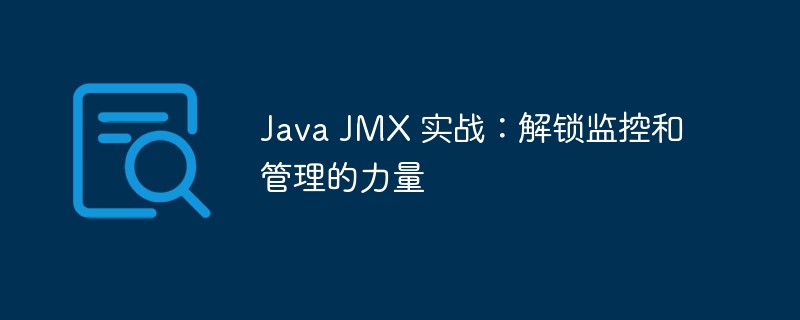

php editor Baicao will take you to explore the actual combat of Java JMX and reveal the power of monitoring and management. Through this article, you will learn how to use Java Management Extensions (JMX) technology to monitor and manage Java applications and improve system stability and performance. Follow us for an in-depth study to unlock the power of JMX and help you gain better control over your technology.
JMX Introduction
JMX is part of Java PlatfORM Standard Edition (Java SE) and Java Enterprise Edition (Java EE). It provides a unified framework that allows monitoring and management of Java applications at runtime. The core components of JMX include:
Practice Demonstration
Create and register MBean
class MyMBean implements MyMBeanMXBean {
int counter = 0;
public int getCounter() {
return counter;
}
public void resetCounter() {
counter = 0;
}
}MBeanServer mbeanServer = ManagementFactory.getPlatformMBeanServer();
ObjectName mbeanName = new ObjectName("com.example:type=MyMBean");
mbeanServer.reGISterMBean(new MyMBean(), mbeanName);Accessing and calling MBean
MBeanServerConnection connection = ManagementFactory.getPlatformMBeanServer();
ObjectName mbeanName = new ObjectName("com.example:type=MyMBean");
int counter = (int) connection.getAttribute(mbeanName, "Counter");connection.invoke(mbeanName, "resetCounter", null, null);
JMX Tools
There are several JMX tools available that can simplify monitoring and management tasks:
troubleshooting
Unable to register MBean: Make sure the class has correctly implemented the MBean interface and that the ObjectName is in the correct format.
Unable to access MBean: Check that you are connected to the correct MBeanServer and that the appropriate permissions have been granted.
Exceptions in MBeans: Use jstack or other tools to debug the MBean to determine the root cause of the exception.
Other usage
In addition to monitoring and management, JMX can be used for the following other purposes:
Advantage
There are many advantages to using JMX:
in conclusion
Java JMX is a powerful feature that provides comprehensive monitoring and management capabilities for Java applications. By using demonstrated code examples and strategies, developers can effectively leverage JMX to enhance the reliability, performance, and maintainability of their applications.
The above is the detailed content of Java JMX in action: Unlocking the power of monitoring and management. For more information, please follow other related articles on the PHP Chinese website!




